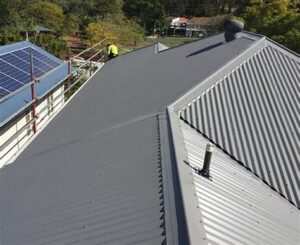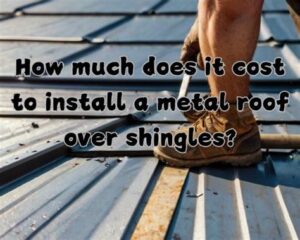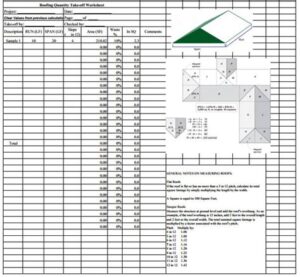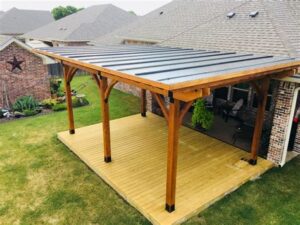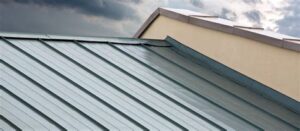Metal roofing has emerged as a preferred choice for homeowners and builders alike, thanks to its durability, aesthetic appeal, and energy efficiency. If you’re considering this innovative roofing solution, you’ll want to understand the various types available today, along with their installation processes and maintenance needs. This comprehensive guide delves into everything you need to know about metal roofing, from the diverse styles and materials to essential care tips that can extend the lifespan of your roof. We’ll also explore cost comparisons and address common issues that may arise. Whether you’re a seasoned contractor or a curious homeowner, this article will equip you with the knowledge you need for smart decisions about your roofing investment. Embrace the benefits of metal roofing and ensure your home is well protected for years to come!
Understanding Different Metal Roofing Types Available Today
Metal roofing has become increasingly popular due to its durability, energy efficiency, and aesthetic appeal. There are several types of metal roofing systems, each with distinct characteristics and benefits. Here’s an overview of the various metal roofing types available today:
- Steel Roofing: One of the most common types, steel roofing can be either galvanized or galvalume. Galvanized steel is coated with zinc to prevent rust, while galvalume features a combination of zinc and aluminum for enhanced corrosion resistance. Steel roofing is robust and relatively inexpensive.
- Aluminum Roofing: Lightweight and corrosion-resistant, aluminum roofing is a great choice for coastal areas where saltwater spray can be an issue. Its reflective properties also help in reducing cooling costs, making it energy efficient.
- Copper Roofing: Renowned for its beauty and exceptional durability, copper roofing develops a natural patina over time, enhancing its aesthetic appeal. However, it tends to be the most expensive option, suitable for specific architectural styles and high-end projects.
- Zinc Roofing: Similar to copper, zinc roofing develops a protective patina that can last for decades. It is also lightweight and easy to work with, making it a sustainable choice for various building styles.
- Metal Shingles: These are designed to resemble traditional roofing materials like wood shake or slate, providing the aesthetic appeal of these materials while retaining the benefits of metal. Metal shingles are typically made from steel or aluminum.
- Standing Seam Metal Roofing: This type consists of vertical panels with interlocking seams that are raised above the level of the roofing. It offers a sleek appearance and is highly effective at shedding water and snow, making it ideal for regions with heavy precipitation.
When selecting a type of metal roofing, consider factors such as your local climate, budget, and desired appearance. Each type brings unique advantages, ensuring there’s a metal roofing solution that fits every need. Understanding these options is crucial for making an informed decision on everything you need to know about outfitting your home with a metal roof.
Everything You Need To Know About Metal Roofing Installation
When it comes to metal roofing installation, understanding the process is crucial for achieving a long-lasting and durable roof. Here are the key steps and considerations you should be aware of:
1. Choosing the Right Type of Metal Roofing: Before installation, confirm which type of metal roofing best suits your home and local climate. Options include aluminum, steel, copper, and zinc, each with unique properties and costs.
2. Preparing the Roof Structure: Ensure that your existing roof structure is sound and capable of supporting the weight of the metal roofing. Any repairs needed should be done prior to installation.
3. Installing Underlayment: Applying a reliable underlayment is essential to offer an extra barrier against moisture. This step plays a vital role in protecting your roof decking.
4. Proper Flashing and Ventilation: Installation of flashing around roof penetrations like chimneys and vents is critical to prevent leaks. Additionally, ensure proper ventilation to enhance thermal performance and extend the life of your roof.
5. Securing the Panels: Metal panels are typically installed starting from the bottom and working your way up. It’s crucial to properly secure the panels using appropriate fasteners while allowing for thermal expansion.
6. Completing the Installation: Finish the installation by ensuring that all seams are sealed and that any additional accessories, such as ridge caps, are added for a finished look. Be sure to inspect for any potential vulnerabilities and address them accordingly.
7. Regular Inspection Post-Installation: After installation, regular inspections are necessary to ensure that your roof remains in optimal condition. Look for any signs of rust, damage, or wear and address them immediately to maintain the integrity of your metal roofing.
By keeping these essential installation tips in mind, you can ensure that your metal roofing not only looks great but also stands the test of time. Proper installation is the foundation of a durable roofing system that can resist various environmental factors.
Essential Maintenance Tips For Metal Roofing Longevity
To ensure your metal roofing lasts as long as possible while maintaining its aesthetic appeal, periodic maintenance is crucial. Here are some essential tips to keep in mind:
By following these everything you need to know maintenance tips, you can greatly enhance the lifespan of your metal roofing, keeping it in great shape for many years to come.
Comparing Metal Roofing Costs And Benefits Effectively
When considering metal roofing, one of the primary concerns for homeowners is the balance between everything you spend on installation and maintenance versus the benefits you reap in the long run. Understanding both the initial costs and the long-term advantages can help you make an informed decision.
| Metal Roofing Type | Initial Cost (per square foot) | Expected Lifespan (years) | Benefits |
|---|---|---|---|
| Steel | $3-$6 | 40-70 | Durable; high resistance to wind and hail; recyclable. |
| Aluminum | $4-$9 | 50-70 | Lightweight; corrosion-resistant; ideal for coastal environments. |
| Copper | $8-$15 | 70+ | Highly durable; elegant appearance; develops a patina over time. |
| Zinc | $5-$10 | 80+ | Self-healing properties; naturally resistant to corrosion. |
While the upfront costs of metal roofing can be higher than traditional roofing materials, the long-term savings are significant. Metal roofs require less frequent replacement and can lead to lower energy bills due to their reflective properties. Additionally, they may qualify homeowners for tax credits and insurance discounts.
Conducting a thorough cost-benefit analysis aligned with your personal needs will ensure that everything you invest is worthwhile! Consider factors such as local climate, style preferences, and specific maintenance requirements to make the best choice for your home.
Common Issues And Solutions For Metal Roofing Care
When it comes to metal roofing, regular maintenance is key to ensuring its longevity and performance. However, some common issues may still arise, requiring homeowners to take proactive measures. Here’s a look at some typical issues associated with metal roofing and practical solutions for care.
| Common Issue | Possible Causes | Effective Solutions |
|---|---|---|
| Rust Development | Poor coating, moisture accumulation | Apply anti-corrosive primer and repaint with metal-specific paint. |
| Loose Panels | Temperature fluctuations, poor installation | Check fastening and resecure panels as needed. |
| Leaks | Worn-out sealant, damaged flashing | Inspect seals and flashing; replace or repair as necessary. |
| Debris Buildup | Overhanging branches, wind-blown debris | Regularly clear roof debris and trim overhanging trees. |
| Fading Color | Sun exposure, poor-quality paint | Consider repainting with high-quality, UV-resistant paint. |
By staying vigilant about these common issues and employing effective solutions, property owners can ensure that their metal roofing system remains in optimal condition. Everything You need to maintain a metal roof effectively is achievable with proper care and timely interventions.
Frequently Asked Questions
What are the main types of metal roofing?
The main types of metal roofing include aluminum, steel (galvanized or galvalume), copper, and zinc. Each type has unique properties and benefits, making it suitable for different applications.
How long does metal roofing typically last?
Metal roofing can last anywhere from 40 to 70 years, depending on the material used and the maintenance provided. Proper installation and care can significantly extend its lifespan.
What are the advantages of metal roofing compared to traditional materials?
Metal roofing offers several advantages, such as durability, lightweight, energy efficiency, fire resistance, and low maintenance requirements. Additionally, it can enhance the aesthetic appeal of a property.
What maintenance is required for metal roofs?
Metal roofs require minimal maintenance, but it’s essential to perform regular inspections to check for loose screws, rust, or other damage. Cleaning debris and ensuring proper drainage can help extend the roof’s lifespan.
Are metal roofs energy-efficient?
Yes, metal roofs are energy-efficient. They reflect solar radiant heat, which can lower cooling costs in warmer climates. Many metal roofs are also available with cool roofing technology to further improve energy efficiency.
Can metal roofing be installed over existing roofing materials?
In many cases, metal roofing can be installed over existing roofing materials, provided the old roof is in good condition. This can save on removal costs and reduce waste.
How does weather affect metal roofing maintenance?
Weather conditions, such as heavy rain, snow, and strong winds, can impact metal roofing maintenance. Regular inspections after severe weather events can help identify any damage that needs immediate attention to maintain the roof’s integrity.
